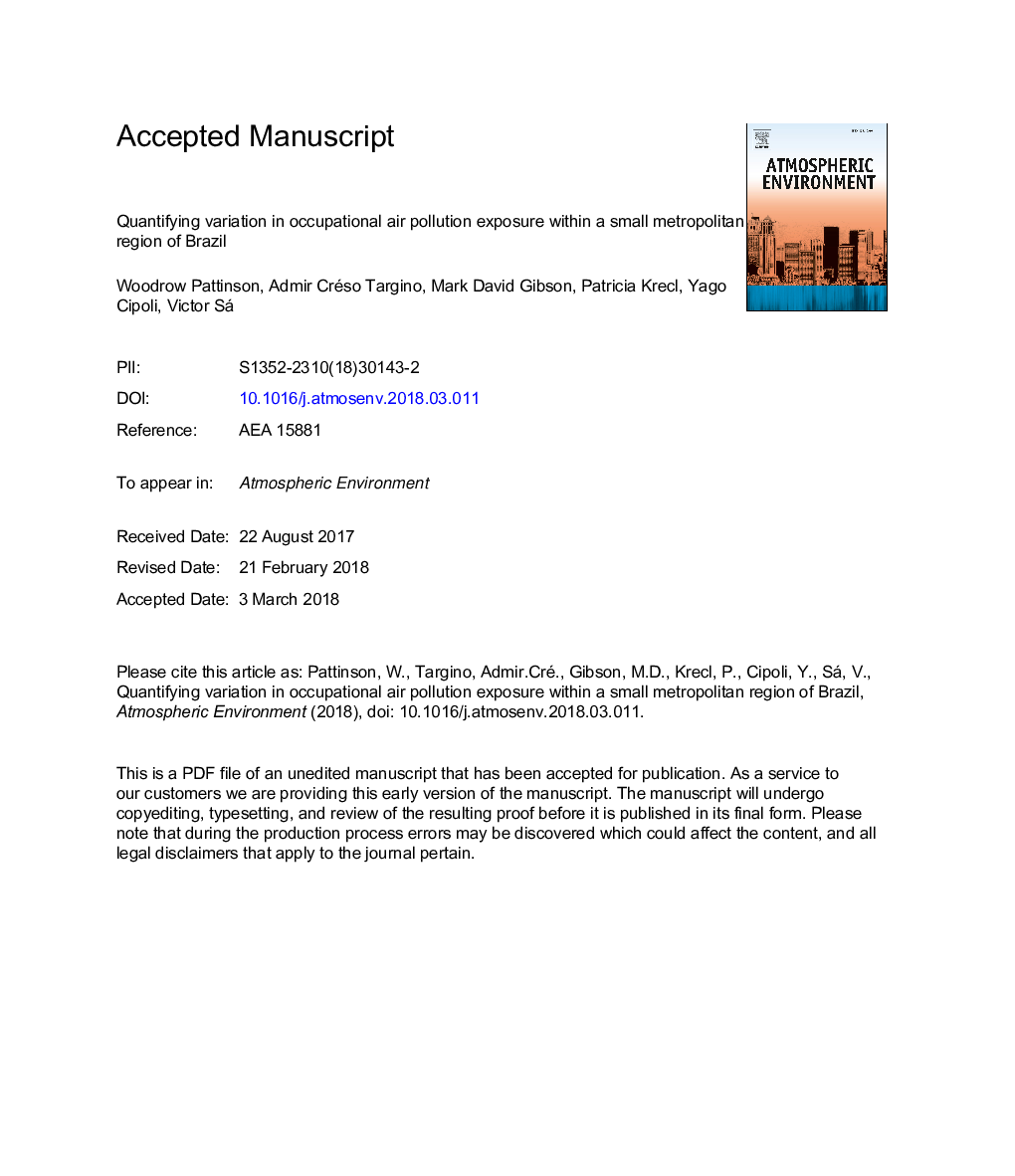| کد مقاله | کد نشریه | سال انتشار | مقاله انگلیسی | نسخه تمام متن |
|---|---|---|---|---|
| 8863863 | 1620292 | 2018 | 37 صفحه PDF | دانلود رایگان |
عنوان انگلیسی مقاله ISI
Quantifying variation in occupational air pollution exposure within a small metropolitan region of Brazil
ترجمه فارسی عنوان
تنوع کوانتیزاسیون آلودگی هوا در یک منطقه کوچک در برزیل
دانلود مقاله + سفارش ترجمه
دانلود مقاله ISI انگلیسی
رایگان برای ایرانیان
کلمات کلیدی
قرار گرفتن در معرض شغلی، کیفیت هوا، ترکیبات آلی فرار، کربن سیاه، ذرات جامد، تعداد ذرات، ازن،
موضوعات مرتبط
مهندسی و علوم پایه
علوم زمین و سیارات
علم هواشناسی
چکیده انگلیسی
An occupational sampling campaign was conducted in the city of Londrina, Paraná, during an eleven-week period of the dry season (spring) of 2015. To assess worker exposure, concentrations of black carbon (BC), fine particles (<2.5â¯Î¼m) and particle number counts (PNC, between 0.01 and 1.0â¯Î¼m), total volatile organic compounds (TVOCs) and ozone (O3) were monitored at a 1-min resolution within seven occupational microenvironments for an entire working week (â¼45â¯h in each location). Workplace observations were supported by simultaneous collection of BC, PM2.5, PNC, O3 and meteorological variables at an urban background site. In order to distinguish between immediate local sources and wide-area influences on worker exposures, the contribution of long-range transport (LRT) from fire events was assessed using air mass back trajectory and satellite fire spot analyses. A total of fifteen environmental variables influencing workplace exposures were tested using multiple regression models and exposure differences between occupations were assessed using non-parametric tests. Although the environmental settings differed substantially, weekly median exposures were similar, with the exception of occupations involving significant indoor sources and those proximate to heavy traffic. Median TVOC exposure was 8 (3,351, range 17-77,530â¯ppb, pâ¯<â¯0.001) and 3.5 times higher (1,616, range 0.3-18,861â¯ppb, pâ¯<â¯0.001) at a shoe repair store and hair salon, respectively, than in a clean office environment situated directly within the city centre (414, range 0.5-4844â¯ppb). Similarly, median BC concentrations were 2.8 (3.7, range 1.2-27.8â¯Î¼g/m3, pâ¯<â¯0.001) times greater inside a street canyon drug store and elevated by a factor of 3.0 (3.8, range 0.4-39.6â¯Î¼g/m3, pâ¯<â¯0.001), on a local commuter bus, than in the office environment (1.3â¯Î¼g/m3). These results hold important implications for workplace exposure and can aid in informing potential mitigation strategies, such as a review of ventilation configurations and hazardous materials used in certain occupations.
ناشر
Database: Elsevier - ScienceDirect (ساینس دایرکت)
Journal: Atmospheric Environment - Volume 182, June 2018, Pages 138-154
Journal: Atmospheric Environment - Volume 182, June 2018, Pages 138-154
نویسندگان
Woodrow Pattinson, Admir Créso Targino, Mark David Gibson, Patricia Krecl, Yago Cipoli, Victor Sá,
